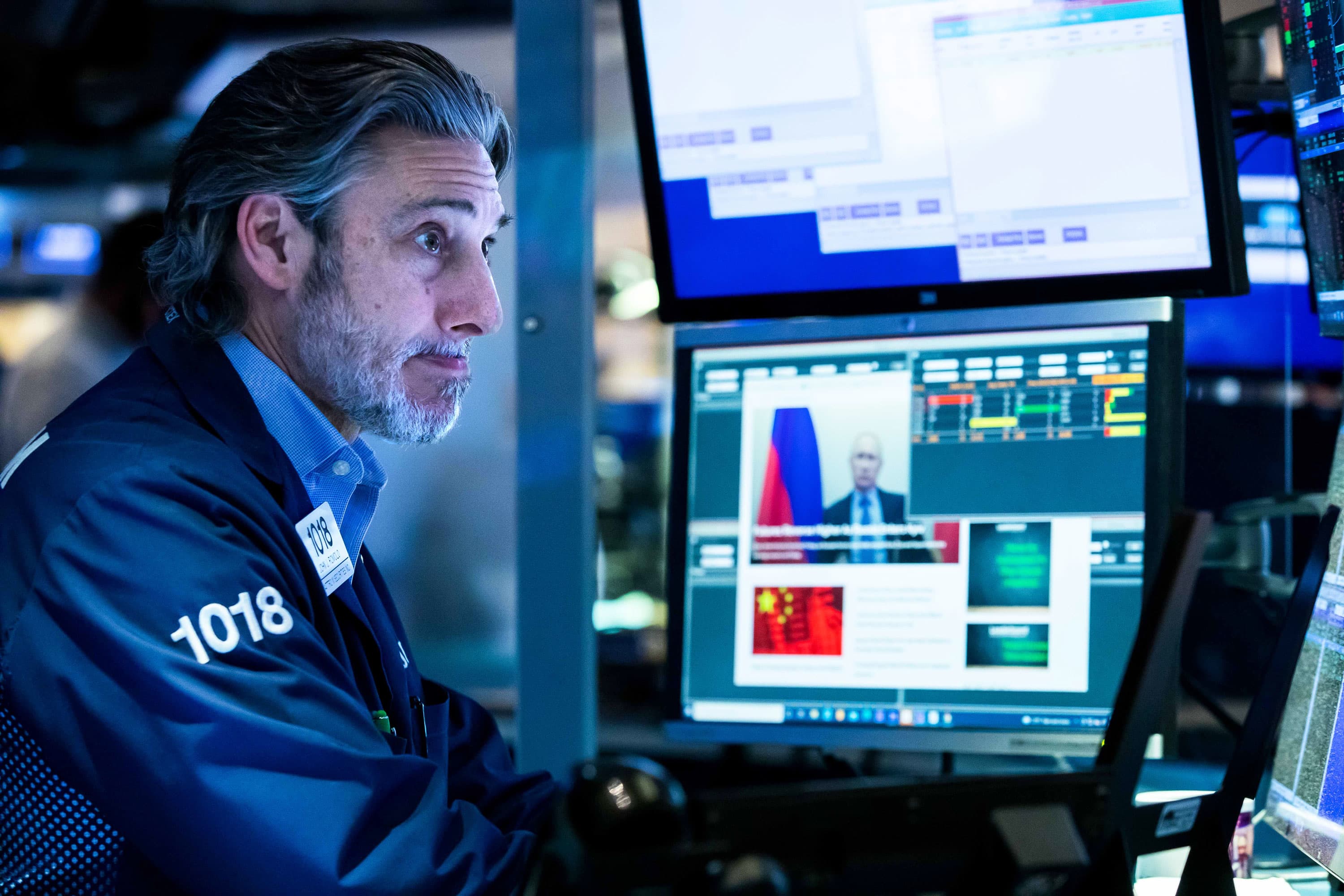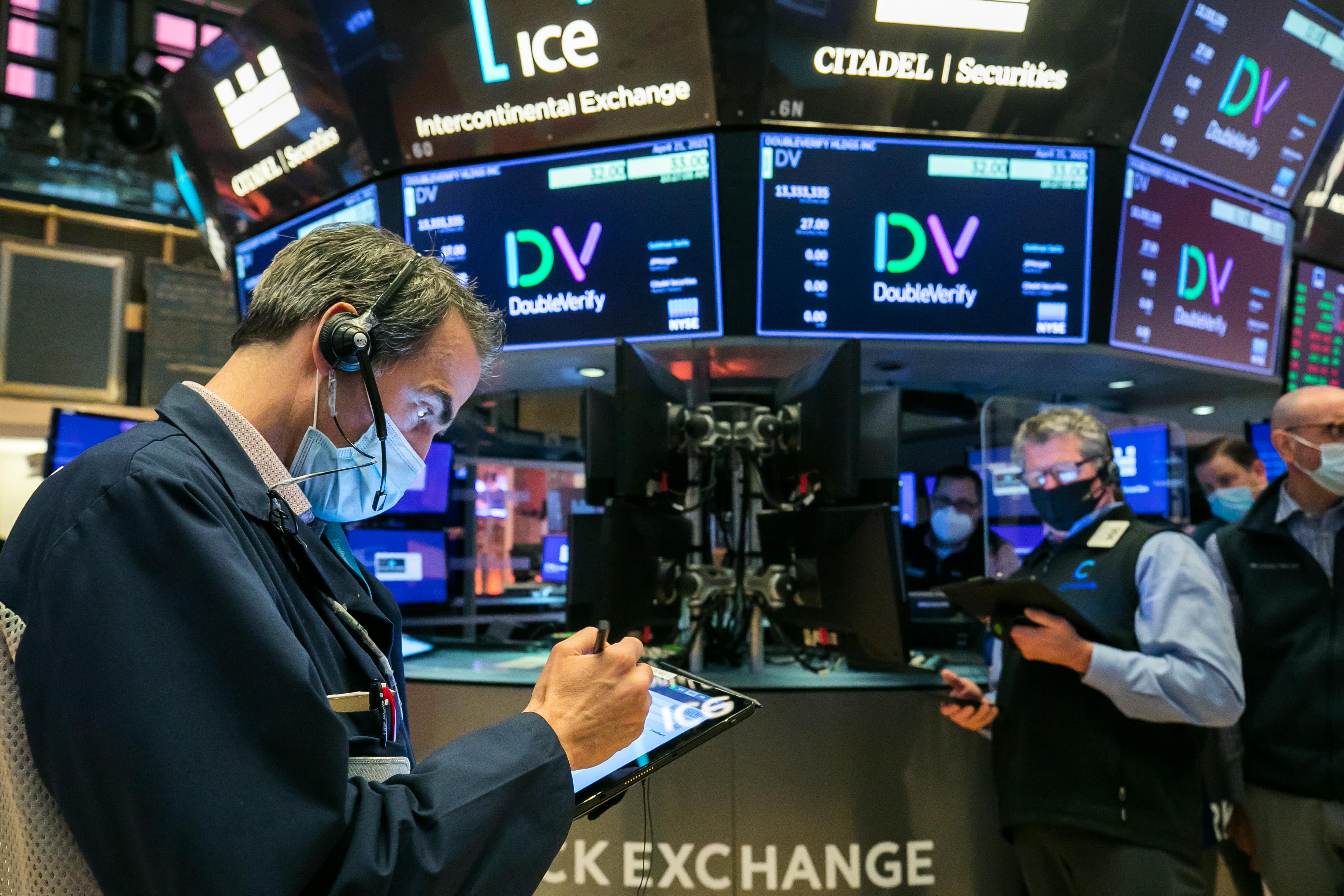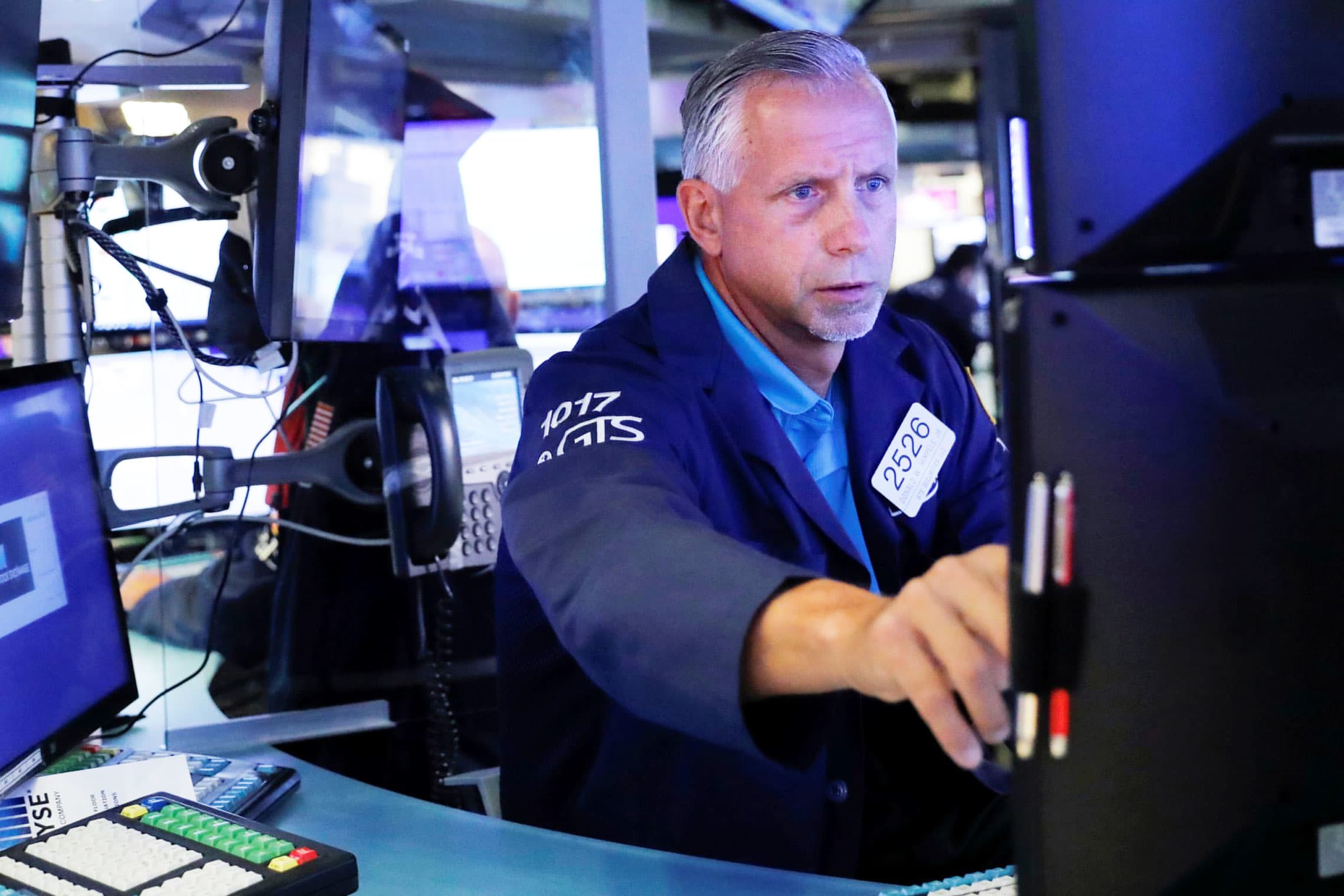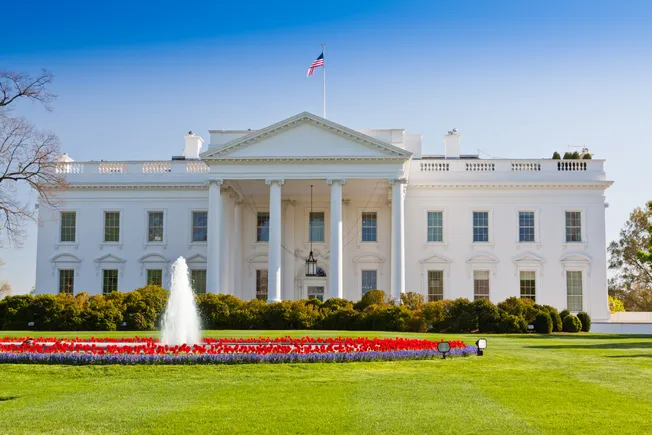Dow jumps nearly 200 points after mounting second stunning comeback in a row
U.S. stocks traded volatilely on Tuesday a day after one of the biggest comebacks on record for the major averages.

The Dow Jones Industrial Average recovered from a decline of more than 800 points for a second day in a row, an unusual burst of volatility that comes as the Federal Reserve is preparing investors for tighter monetary policy.
The blue-chip average gained about 150 points, or 0.4%, after losing as much as 818.98 points earlier in the session. The S&P 500 dipped 0.3% and the tech-heavy Nasdaq Composite fell 0.8%, well off their lows of the day.
Tuesday's market action came after the Dow on Monday rallied from a more than 1,000-point loss to close higher for the first time ever. The Nasdaq Composite reversed a 4.9% decline from earlier in the day to finish positive — its biggest rebound since 2008. The S&P 500 also rallied from major losses to close up.
"The roller coaster trading atmosphere continues," Vital Knowledge's Adam Crisafulli said in a note Tuesday. "The lows from yesterday though haven't been breached."
Banks and energy stocks, sectors that stand to benefit from a recovering economy and higher yields, led Tuesday's comeback. The yield on the benchmark 10-year Treasury note resumed its 2022 gain Tuesday to around 1.78%. Bank of America and Citigroup each added more than 2%. Occidental Petroleum, APA Corp and Halliburton all rose more than 8%.
American Express was the top gainer on the Dow and the S&P 500 after an earnings beat, adding 9.5%. Dow members IBM and Johnson & Johnson were also among the top gainers on the index after reporting quarterly results.
Tech shares traded off their lows, but most remained in the red. Nvidia, down 22% this year, was still down 2.4%. However, Tesla, which reports earnings after the bell Wednesday, swung into positive territory.
General Electric was among the biggest decliners on the S&P 500 with a 4.9% loss after the company topped quarterly earnings expectations, but missed revenue estimates.
Stock picks and investing trends from CNBC Pro:
Even after Monday's comeback, the S&P 500 is down more than 7% in January, on pace for its worst month since March 2020 at the onset of the pandemic.
"I don't think it's done," Liz Young, head of investment strategy at SoFi, told CNBC's "Squawk Box" on Tuesday. "This ... is a digestion process of a new environment that we're not conditioned for."
The 10-year Treasury yield has climbed this year as the Federal Reserve signaled it will begin tightening monetary policy as soon as March with a rate hike. Investors have rotated out of high-growth areas of the market in favor of safer bets. The Nasdaq Composite is in correction territory, down more than 15% from its intraday record.
"Downside risks from monetary tightening are higher vs history. The pain has so far been localized to high valuation stocks, but signs of a broader risk-off are brewing," Barclays' Maneesh Deshpande said in a note Tuesday.
The Fed's two-day policy meeting begins Tuesday as investors look for updates on when the central bank will raise interest rates and by how much. Market participants expect the Fed to signal a rate hike as soon as March and more policy tightening on the table to address high inflation.
Investors also monitored geopolitical tension at the Russia-Ukraine border. President Joe Biden spoke with European leaders Monday amid fears of a possible Russian invasion of Ukraine.

 Koichiko
Koichiko 



























.jpg&h=630&w=1200&q=100&v=f776164e2b&c=1)




